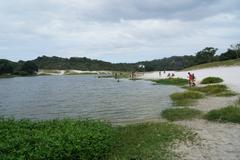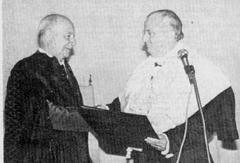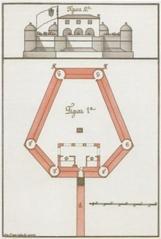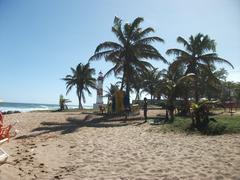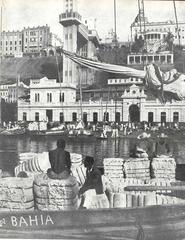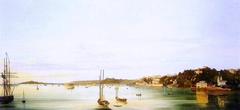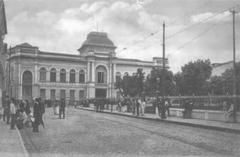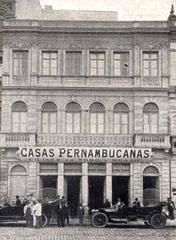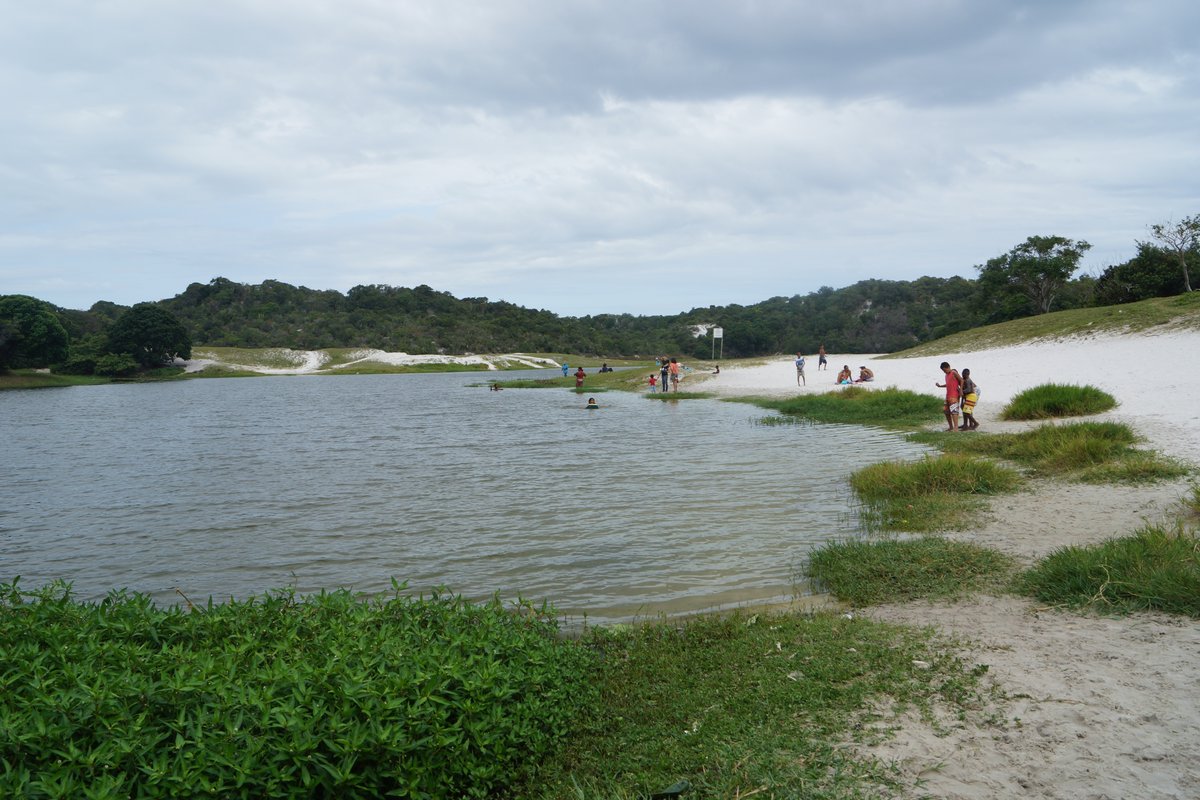
Comprehensive Guide to Lagoa do Abaeté in Salvador, Brazil
Date: 19/07/2024
Introduction
Nestled in the vibrant city of Salvador, Bahia, Lagoa do Abaeté is a treasure trove of cultural, historical, and ecological significance. This scenic lagoon, with its pristine waters and lush surroundings, is not merely a picturesque spot but a place deeply intertwined with the soul of Bahia. From its sacred roots in Tupinambá indigenous culture to its pivotal role in Afro-Brazilian religions like Candomblé, Lagoa do Abaeté offers a unique blend of natural beauty and cultural depth. This guide delves into the lagoon’s rich history, its ecological importance, and practical visitor information, ensuring that you experience the full essence of this enchanting destination. Whether you’re drawn by its spiritual aura, its biodiversity, or its array of activities, Lagoa do Abaeté is a must-visit spot that promises a memorable and enriching experience. For more insights into its significance and how to make the most of your visit, continue reading our comprehensive guide. (source)
Table of Contents
- Introduction
- Historical Background and Cultural Significance
- Ecological Significance of Lagoa do Abaeté
- Visitor Information
- Activities around the Lagoon
- Cultural Experiences
- Conclusion
- FAQ
- References
Historical Background and Cultural Significance
Early History and Indigenous Roots
Long before the arrival of the Portuguese, the Tupinambá indigenous people considered Lagoa do Abaeté sacred. The name “Abaeté” originates from the Tupi language, meaning “good lake” or “lake of the good man.” This reflects the deep reverence the Tupinambá held for the lagoon, believing it to be inhabited by powerful spirits and deities. They saw it as a source of life, sustenance, and spiritual connection.
Arrival of the Africans and the Rise of Candomblé
The arrival of enslaved Africans in Brazil during the 16th century brought a new dimension to the cultural landscape of Bahia, including the spiritual significance of Lagoa do Abaeté. The lagoon became a sanctuary for the practice of Candomblé, an Afro-Brazilian religion that blended traditional Yoruba beliefs with elements of Catholicism.
Candomblé practitioners, unable to openly practice their religion under Portuguese rule, found solace and secrecy in the natural surroundings of the lagoon. The dense vegetation and secluded location provided a safe haven for rituals and ceremonies. Over time, Lagoa do Abaeté became a focal point for Candomblé in Bahia, with various shrines and terreiros (Candomblé temples) established in its vicinity.
Abaeté and the Orixás
Central to Candomblé is the veneration of orixás, deities who represent different forces of nature and human experience. Lagoa do Abaeté is particularly associated with the orixá Oxum, the deity of freshwater, love, beauty, and fertility. The lagoon’s serene waters and lush surroundings are seen as physical manifestations of Oxum’s presence and power.
Every year, on February 2nd, a vibrant festival dedicated to Oxum takes place at Lagoa do Abaeté. Thousands of devotees, dressed in white, gather at the lagoon’s edge to pay homage to the orixá. Offerings of flowers, perfumes, and food are presented to the lagoon, accompanied by traditional songs and dances. This festival is a testament to the enduring legacy of Candomblé and the profound spiritual connection to Lagoa do Abaeté.
Lagoa do Abaeté in the 20th Century
The 20th century saw significant changes in the landscape surrounding Lagoa do Abaeté. Urban development encroached upon the once-pristine natural environment, leading to concerns about pollution and environmental degradation. However, the lagoon’s cultural and spiritual significance remained deeply ingrained in the local community.
Preservation Efforts and Recognition
Recognizing the importance of preserving Lagoa do Abaeté, both for its ecological and cultural value, efforts have been made to protect and revitalize the area. In 1992, the lagoon and its surrounding dunes were designated as Parque Natural Municipal Lagoa e Dunas do Abaeté, a municipal natural park aimed at conserving its biodiversity and cultural heritage.
Ecological Significance of Lagoa do Abaeté
Flora - A Tapestry of Life
The vegetation surrounding Lagoa do Abaeté is a vibrant tapestry woven with elements of the Atlantic Forest, restinga (coastal vegetation), and dune ecosystems. Towering coconut trees line the shores, their fronds swaying in the breeze. Beneath them, a rich understory thrives, home to a variety of bromeliads, orchids, and other resilient plant species adapted to the sandy, nutrient-poor soils.
Fauna - A Haven for Biodiversity
Lagoa do Abaeté and its surrounding dunes provide a crucial refuge for a surprising array of animal life. Birdwatchers will delight in spotting numerous species, including herons, egrets, kingfishers, and even migratory birds that use the lagoon as a stopover point on their long journeys. The lagoon itself teems with aquatic life, including various fish species, crustaceans, and mollusks, forming a vital link in the local food chain. Keep an eye out for the playful capybaras, the world’s largest rodents, often spotted near the water’s edge.
Visitor Information
Visiting Hours and Tickets
Lagoa do Abaeté is open to visitors daily from 6:00 AM to 6:00 PM. Entry to the lagoon is free, but some nearby attractions and facilities may have separate fees.
Travel Tips
- Best Time to Visit: The best time to visit is during the dry season (November to March) when the weather is pleasant, and the festival dedicated to Oxum takes place in February.
- What to Bring: Comfortable walking shoes, sunscreen, water, and a camera to capture the stunning scenery.
- Safety Tips: While the area is generally safe, it’s advisable to visit during daylight hours and stay in groups.
Nearby Attractions
- Itapuã Beach: A popular beach located just a short distance from Lagoa do Abaeté, known for its beautiful white sands and vibrant local culture.
- Vinicius de Moraes Square: A cultural hub dedicated to the famous Brazilian poet and musician, offering a glimpse into Bahia’s artistic heritage.
- Candomblé Terreiros: Explore nearby Candomblé temples to gain deeper insights into the Afro-Brazilian religious practices and traditions.
Accessibility
Lagoa do Abaeté is accessible by public transportation, taxis, and rideshare services. Pathways around the lagoon are well-maintained and suitable for visitors with mobility challenges.
Activities around the Lagoon
Dune Buggy Rides
Explore the impressive dunes surrounding Lagoa do Abaeté on an exhilarating dune buggy ride. Local tour operators offer this thrilling activity, providing a unique way to experience the landscape.
Horseback Riding
For a more tranquil way to appreciate the scenery, horseback riding along the lagoon’s edge is a popular choice. Several providers offer guided tours, allowing you to soak in the views at a leisurely pace.
Hiking
Nature trails wind their way around the lagoon, offering opportunities for scenic hikes. These trails cater to different fitness levels, from leisurely strolls to more challenging routes.
Cycling
Explore the area on two wheels by renting a bicycle. Cycle paths run alongside the lagoon, providing a pleasant and healthy way to enjoy the surroundings.
Cultural Experiences
Samba de Roda
Lagoa do Abaeté is considered a cradle of Afro-Brazilian culture, and Samba de Roda, recognized by UNESCO as an Intangible Cultural Heritage of Humanity, is an integral part of the local identity. Witness vibrant performances of this energetic musical tradition, often held at venues near the lagoon.
Local Cuisine
Indulge in the flavors of Bahia by sampling local delicacies at the restaurants and food stalls around the lagoon. Fresh seafood features prominently, alongside traditional dishes like acarajé and moqueca.
Handicrafts
Browse the stalls and shops selling local handicrafts, offering unique souvenirs and gifts. From intricate lacework to colorful paintings and wood carvings, you’ll find a variety of handcrafted treasures to take home.
Conclusion
Lagoa do Abaeté stands as a testament to the resilience of Afro-Brazilian culture and the enduring power of nature. It remains a place of pilgrimage for Candomblé practitioners, a source of inspiration for artists and musicians, and a cherished natural space for residents and visitors alike.
A visit to Lagoa do Abaeté offers a unique opportunity to connect with the rich tapestry of Bahian history and culture. It’s a place where the echoes of ancient rituals mingle with the rhythms of modern life, creating an atmosphere that is both captivating and profound.
FAQ
- What are the visiting hours for Lagoa do Abaeté?
- Lagoa do Abaeté is open daily from 6:00 AM to 6:00 PM.
- Is there an entry fee for Lagoa do Abaeté?
- Entry to the lagoon is free, but some nearby attractions may have separate fees.
- When is the best time to visit Lagoa do Abaeté?
- The best time to visit is during the dry season (November to March), especially in February for the festival dedicated to Oxum.
- Are there any safety tips for visiting Lagoa do Abaeté?
- It’s advisable to visit during daylight hours and stay in groups for safety.
References
- Visiting Lagoa do Abaeté - History, Significance, and Visitor Information, 2024, Audiala (source)
- Lagoa do Abaeté in Salvador - Ecological Significance, Visiting Hours, and Conservation Efforts, 2024, Audiala (source)
- Exploring Lagoa do Abaeté - Visitor Information, Tickets, and Top Activities in Salvador, 2024, Audiala (source)
